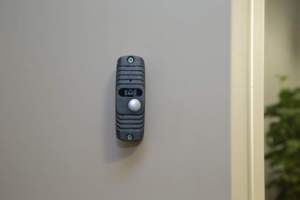Access Control Systems Design
Designing of security systems access control (ACS) is necessary to restrict access to different premises or a secured area, protection from unauthorized penetration of persons, not listed as allowed visitors, and to control the employees working hours. An access control system can be integrated into the general security system of the facility or it can exist independently.
The main types of equipment

Depending on the purpose and the security level ACS designing implies an application of the following equipment:
- internal and external blocking devices (electrical and mechanical turnstiles, special locks, man-traps);
- access codes reader units for swipe cards or biometric recognition;
- identification devices (Touch Memory, Proxy-card);
- digital keypad panels to enter a unique electronic code;
- controllers;
- specialized software platform.
Depending on the site security setup requirements the ACS design concept may have the following functional differences in:
- the control method;
- the access levels of installation;
- the current degree of protection;
- the set of options.
We also take into account the possibility of analysis and use of the system as an automated record of working time for each employee.
Development of ACS design
Access control systems design involves several steps:
- analysis of the site and the territories for possible entry points and planning specific features;
- brief design preparation on the basis of the access control goals;
- development of the system general concept;
- preparation of a set of working documentation;
- hardware specification.
When designing the ACS a detailed layout of all the system elements, a package of hardware and software, structural connections schemes, cable runs, the exit points for connecting with adjacent protection networks are indicated. Properly installed access control system allows for the effective protection of the site.
Error

 RU
RU